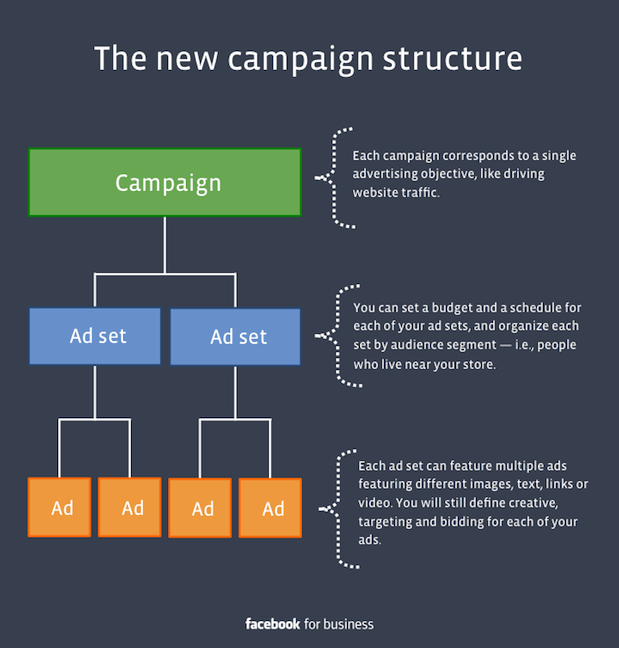Advertising on Facebook has become a very popular business practice over the last couple of years, and for good reason. With consumers’ willingness to make online purchases rapidly improving, Facebook has become the most popular ad platform, behind Google Ads.
With the ability to double your sales (see the success story of GOAT STORY), to enabling businesses to recapture bounced traffic with Facebook retargeting, you need to always have an eye on your Facebook ads.
7 Ways to Up the ROI of Advertising on Facebook
In this post you’ll find seven mistakes commonly made when it comes to advertising on Facebook. These mistakes lead to spending more money on your ads and getting less favorable results (increased cost for clicks or impressions). Fixing these mistakes (we’ve provided solutions), your ads will generate more clicks for the same budget. Enjoy!
1. Mistake: Not Matching the Ad to Your Goal
Not all ad formats are equal and neither are your ads. When advertising on Facebook your ads targeted to get signups should be quite different than an your ads targeted to get more immediate sales.
For instance, if you are paying per click (CPC), ads should be as targeted as possible, which means you might need to go for a smaller audience that is more likely to make a purchase (or take another wanted action on your site). Your goal is to reach the most targeted, and ready to purchase audience, rather than just trying to reach as many people as possible.
Unlike the CPM example below (dog shelter), this CPC ad goes for ‘quality’ and not quantity (in regards to target audience).

Dollar Shave Club doesn’t go out and target every female, rather this ad is probably targeted toward millennial woman in bigger cities (that may or may not be following/interested in beauty and fashion brands). To get the best return on their dollar they minimize risk (commitment and ‘sign up’ instead of ‘buy now’) and emphasize low prices (they understand their young millennial audience).
If you pay per impression (CPM), the ads should get as many clicks as possible; you are trying to fit as many people as possible below your umbrella, regardless of whether you’ll have a long term relationship or not.
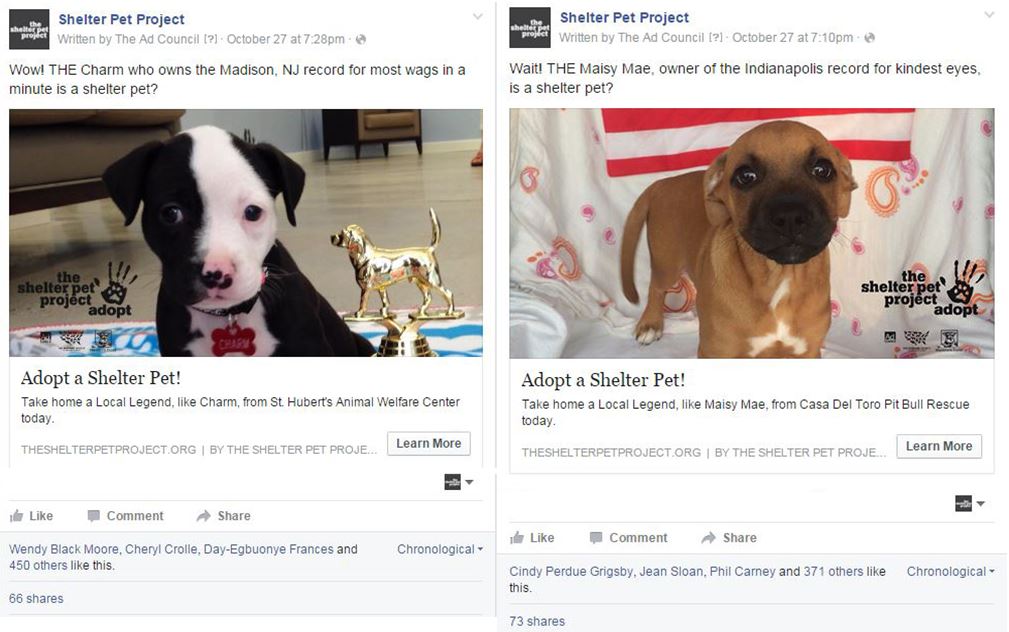
These two ads from a dog shelter are both golden, and instead of guilt tripping people, they play the ‘cute’ card. These are perfect CPM ads trying to raise awareness for shelter dogs and as a means to getting these dogs adopted they’ve created highly-shareable ads to a very wide target audience.
With a larger target audience and a very shareable ‘product’, going for impressions is not a bad move for this animal shelter. If you’ve got something that can get just as many shares, then CPM may be worth your money.
For CPM type ads, the call to action button might be “Learn more” instead, whereas for CPC ads the most successful call to action might be “shop now” or “sign up”. If you don’t match the ad type to the action you want taken, you could end up going for quantity when what you really need is a high-quality audience (CPC ads for instance). Then you’ll just be pouring money into Facebook’s account without getting anything back.
Depending on your ad campaign – CPC or CPM – you should create different images, text and call to action buttons. These ads should not be treated as one in the same with different budgets or with just different call to actions; these two types of ads need to be tested to see what brings better results (which brings us to the next point)
Pro Tip: Don’t go for right hand side ads, as those will get less clicks although you will pay for their impressions.
2. Mistake: Falling in Love with Your Ads
Testing is the rule of all rules to comply with when creating and running ads. There is no perfect advertisement (if there is, we’d love to hear about it). If you, personally, ‘fall in love’ with your ad or become complacent with it, you are likely to see results dip (and not in a good way).
You are not your customers, and even though you may think you are using an awesome image, you are not the judge. The audience is always the judge – ‘The customer is always right’.
In order to prevent the onset of negative results from your ad campaign, it is of utmost importance that you constantly test all of the different elements. Run as many tests possible, which includes making small changes to your ads that may make the difference between a good and great ROI, but also try totally different directions in terms of images, texts and target audience.
What do you need to test? As you can see in the above graphic, there are multiple ‘Ad Sets’ and ‘Ads’, and you want to do the same thing. Create different Ad sets to test different features or traits in your target audience. In your ads, test everything from the title, order of words, number of words, buzzwords, images, and the call to action you write in the ad.
3. Mistake: Poor Landing Page
If you are trying to get people to take an action on your web page, then it is crucial that aside from your ad getting them to visit your page, that your page (the landing page) actually be attractive with high converting text, images, and a call to action.
Your Facebook ad stats may show success. What does it help if you are getting record-low click costs if no one is making a purchase? Why spend marketing dollars to send people to a shady, unprofessional web store?
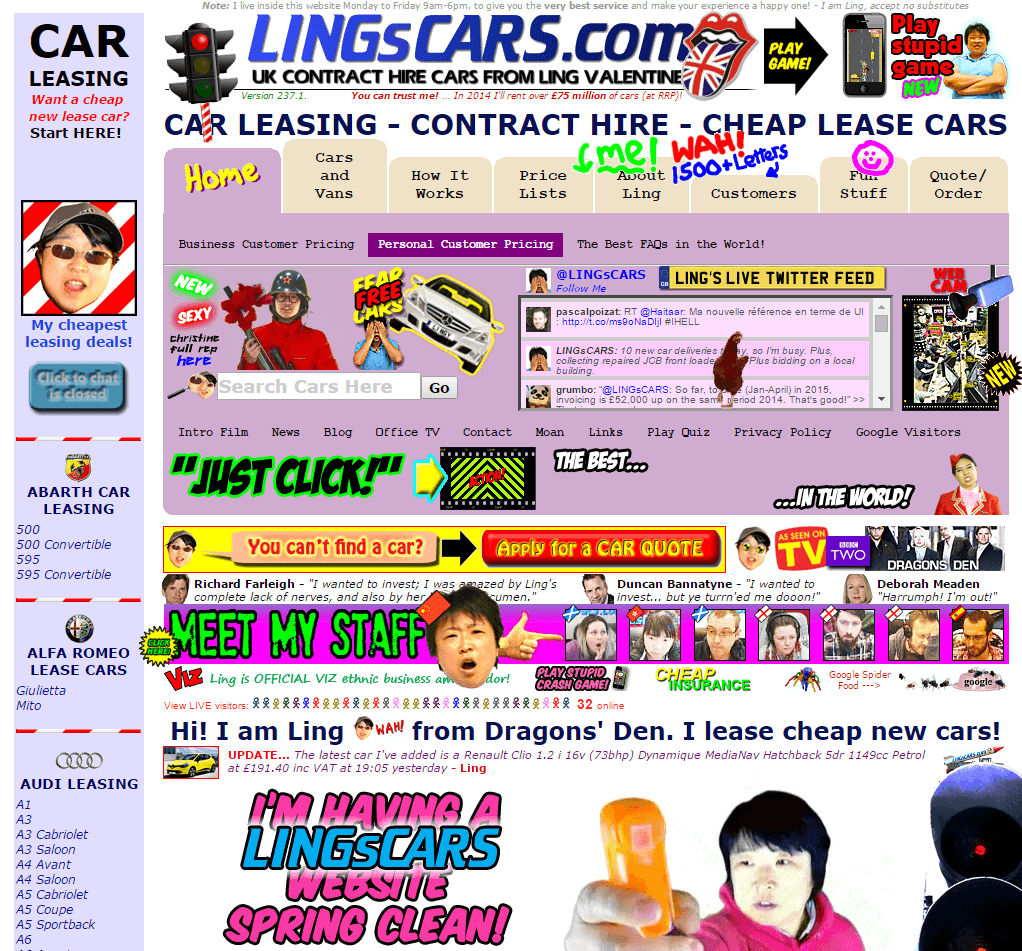
If you create a landing page like the one above, or even with just 25% of the clutter it has, you are not going to see any of the clicks coming from ads converting into sales!
There is no doubt that generating a healthy, and substantial amount of traffic is a must for a website to succeed. Don’t let your business drown by spending dollars on ads that brings traffic that never takes one action on your site; spend time on your ads and on your landing page (they are two peas in a pod).
4. Mistake: Targeting Too Broadly
If you are a small business then I am guessing that getting sales is important. You are not Coca Cola and can’t spend your advertising budget on letting everyone know how relevant or special your business is. Even if you are not a small business, you too are also probably more interested in making sales than in simply getting yourself in front of a huge audience that may or may not have interest in your product.
The point is that your ads cannot be targeted to too wide of an audience or you’ll just see CPC campaigns that don’t convert into purchases, while CPM will either cost you tons for your results (very low CTR) or generate new Facebook followers that are not even remotely interested in what you have to offer or sell.
What’s the problem with having Facebook followers that have no interest in your brand or products? On the one hand you might say you got more likes (that is what you wanted), but on the other hand you could find yourself with dozens of spammy followers or facing an uphill battle in engaging your Facebook followers.
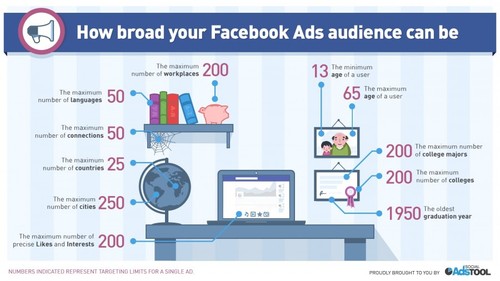
Facebook’s organic reach algorithm works in a way that as more people engage in a positive manner with your posts, the greater the reach will be. So, if people that have no interest are seeing your posts, they are effectively limiting the reach of your posts. Not good.
That’s not the look you want from people on Facebook
5. Mistake: Repetitive Text in Your Ads
This seems like it would be a given (like adding a call to action to your ad), but somehow businesses continue to repeat either their name, the product, or some other important feature/aspects numerous times in the same ad.
The amount of text that you have to promote your business and products is limited. It’s limited because Facebook is still a social media network, which Facebook wants its users to enjoy. Long ad texts and repetitive text bring one common result: uninterested, and unimpressed people.
No one wants to see the same word three times, within 20 words. You don’t have to use every word. What you must do is create a simple, and coherent ad.
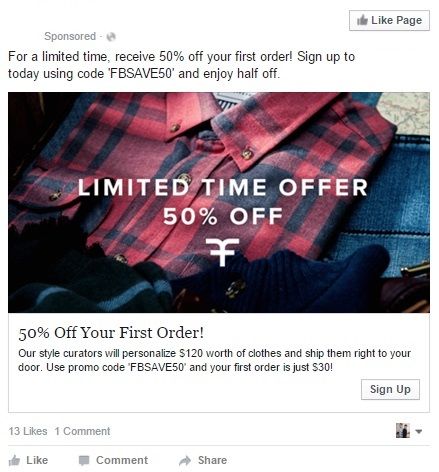
In the above ad, the ‘50%’ discount is mentioned twice in the text above the image, another time in the image, and once more in the link title. Mentioning the half off/50% off in the ad text once would have kept the entire text shorter. Shorter wins on Facebook (ideal post length is 40 characters!)
6. Mistake: Not Maximizing the Return on Ad Spend
When someone has clicked on your ad and visited your web store, the money for that click has been invested. It’s a sunk cost. You can now wait to see if they’ll make a purchase on that visit. Odds are though that they won’t make a purchase on that visit.
Get this – 98% of first time visitors won’t make a purchase and 70% of that bouncing traffic won’t return!
If you are putting all of your eggs into one basket, hoping that the purchase will be made immediately, you are stunting your business’ growth. Instead, as you can see from the above stats, what you should be doing is implementing different mechanisms to ensure that as many people as possible eventually become customers.
Two Solutions to help you maximize the return on your Facebook ad spend: exit intent popups and retargeting ads
Exit Intent Popups
Exit intent popups can be extremely helpful, and we highly recommend implementing one to at least test its effect on your site. If you just can’t stand them, you should at the very least, optimize one for your ads.
The money is spent, and odds are that 98% won’t make a purchase on their visit from your ad. In order to incentivize the chances of an immediate purchase you can use our Exit Pop. You can set it up to offer an immediate discount code for anyone exiting your site (from any page or only a specific page) and only for those coming from an ad campaign!
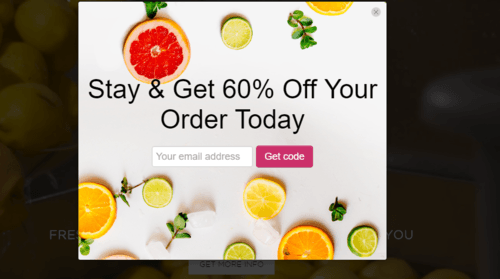
With the use of Exit Pop, this business is maximizing the return on their entire marketing efforts. You can create an exit-intent popup too, either to target only ad traffic, or every visitor!
Facebook Ad Retargeting
One of the more popular advertising strategies of 2015 was retargeting. If you start seeing ads from companies one second after you’ve left a business’ site it’s due to ad retargeting. They’re retargeting because it is working.
- Traditional online ads have a click-through rate of .07%. For retargeted ads, the rate can be as high as 0.7% (source)
- Overall, when users are shopping online, 72% are likely to abandon their shopping carts prior to making the actual purchase. Without any retargeting methods or attempts, only 8% of those customers return to complete their transactions. However, with active retargeting campaigns, the percentage of users who return and complete the check-out process increases to 26%. (source)
If you are not using exit intent popups or retargeting ad campaigns, you are basically throwing a large portion of your ad spend into the garbage. I’d love to understand why you are doing that.
7. Mistake: Thinking Great Ads Will Stay Great
You remember how you used to play with a new toy non-stop for the first few days after getting it, and then abandoning it after you’d gotten used to its presence? The new toy becomes ‘old’, sits on the side, and with time, become outdated. The same thing can happen to Facebook ads.
Aside from testing your ads when launching them and once you think you’ve found a sweet spot, you need to continue tracking the ads results to make adjustments both in the short and long run. One of the biggest tips for getting absolutely amazing results from Facebook ads is to use new ad formats as soon as possible. Why? New ad formats are new. New catches attention and just like it’s new for you it is new for customers.
As you can see in the below image, paid channels do really ‘come & go’. After every rise is a fall. This trend is not only true for formats and platforms, but also for specific ads. Do you remember the ‘Got Milk’ campaign that seemed to last for ages? It’s gone; don’t lay your own ads to sleep by ignoring them.
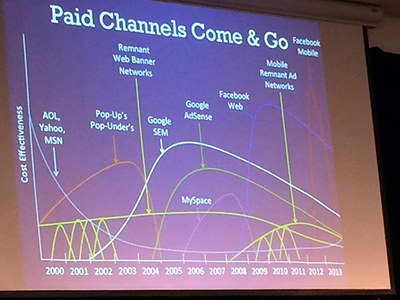
You’d be surprised how many businesses stopped testing an ad and then letting it run for months before they noticed that the ads were close to useless.
Facebook Advertising and Beyond
Facebook is going to continue to develop into an even better place to advertise on. With its continued growth, play into virtual reality, integration with Instagram, and maybe future advertising on WhatsApp the advertising options on Facebook will continually be toyed with so businesses can continue to count on the platform.
With that in mind, you want to be one of the businesses that is constantly nailing its ads. Whether you are or are not currently advertising on Facebook, you must start putting more effort and attention on advancing everything that goes into advertising on Facebook, from the images you use, to the text, and the target audience.
If you want us to help you, we’d be more than happy to add your success to our list of success stories. Check out all of these posts to see how we can help you get a leg up on the competition.
- Google AdWords for eCommerce: How to Get the ROI You Want!
- 450% ROI Using Traffic Booster in 1 Month: The Story of ‘Running On The Wall’
- Better eCommerce Customer Acquisition: The Traffic Booster and its ‘Secret Sauce’
Traffic Booster is our algorithm-powered ad automation system that is managed by a PPC team that has managed more than 100 million dollars on AdWords, Facebook, and other platforms. Check it out now!

Ty is a digital marketing enthusiast that can't get enough social media marketing and content marketing. He is the inbound marketing manager at StoreYa where he spends his days searching for the newest social marketing scoop and creating amazingly awesome content. If you’d like to chat with him, feel free to connect with him on any social platform.
Recommended articles
 Facebook Ads for eCommerce: 16 Strategies, Examples & Tips
Facebook Ads for eCommerce: 16 Strategies, Examples & Tips
 How to Build a Winning eCommerce Ads Strategy
How to Build a Winning eCommerce Ads Strategy
 Google Ads for eCommerce: Everything You Need to Know
Google Ads for eCommerce: Everything You Need to Know
 10X Your Traffic with PPC Management Software
10X Your Traffic with PPC Management Software
Comments
Powered by Facebook Comments
